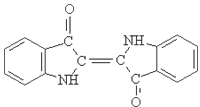China Indigo Dyestuff - Premium Natural Dye Solutions
The History and Significance of Indigo Dyestuff in China
Indigo dyestuff, known for its deep blue hue, has a rich historical significance in China that dates back thousands of years. This natural dye, sourced from the leaves of the Indigofera plant, was one of the earliest dyes utilized by ancient Chinese civilizations. Its journey from a natural resource to an essential element in Chinese culture illustrates the intricate relationship between nature, industry, and art.
The History and Significance of Indigo Dyestuff in China
Indigo dyestuff played a crucial role in the textile industry, particularly in the production of traditional garments. It became a staple in dyeing techniques, especially for silk and cotton fabrics. The blue dye was considered a symbol of status and elegance, often associated with the ruling class and affluent merchants. The unique shades produced from indigo were sought after both domestically and internationally, making it an important commodity in trade.
china indigo dyestuff

Moreover, the significance of indigo extended beyond its aesthetic appeal. In Chinese culture, the color blue has been associated with notions of purity, tranquility, and nobility. Indigo-dyed fabrics were often used in ceremonial garments, signifying their importance in cultural and religious practices. The dyeing process itself became an art form, with artisans perfecting techniques to produce varying shades and patterns, thus enhancing the fabric’s appeal and cultural value.
Despite its longstanding popularity, the indigo industry in China faced challenges during the 20th century with the advent of synthetic dyes. These modern alternatives, while cheaper and easier to produce, lacked the historical and cultural richness of natural indigo. However, in recent years, there has been a revival of interest in natural dyes, driven by a growing awareness of sustainability and the desire to preserve cultural heritage.
Today, artisans in China are once again embracing traditional indigo dyeing techniques. They are combining ancient methods with contemporary designs, appealing to a global market that values authenticity and craftsmanship. This resurgence not only honors a vital part of Chinese history but also supports sustainable practices in the textile industry.
In conclusion, indigo dyestuff represents more than just a color; it embodies a rich tapestry of Chinese history, culture, and artistry. The revival of indigo techniques serves as a reminder of the importance of preserving traditional practices while adapting to the modern world. Through these efforts, indigo continues to be a significant part of China’s cultural identity and heritage.
-
The Timeless Art of Denim Indigo Dye
NewsJul.01,2025
-
The Rise of Sulfur Dyed Denim
NewsJul.01,2025
-
The Rich Revival of the Best Indigo Dye
NewsJul.01,2025
-
The Enduring Strength of Sulphur Black
NewsJul.01,2025
-
The Ancient Art of Chinese Indigo Dye
NewsJul.01,2025
-
Industry Power of Indigo
NewsJul.01,2025
-
Black Sulfur is Leading the Next Wave
NewsJul.01,2025

Sulphur Black
1.Name: sulphur black; Sulfur Black; Sulphur Black 1;
2.Structure formula:
3.Molecule formula: C6H4N2O5
4.CAS No.: 1326-82-5
5.HS code: 32041911
6.Product specification:Appearance:black phosphorus flakes; black liquid

Bromo Indigo; Vat Bromo-Indigo; C.I.Vat Blue 5
1.Name: Bromo indigo; Vat bromo-indigo; C.I.Vat blue 5;
2.Structure formula:
3.Molecule formula: C16H6Br4N2O2
4.CAS No.: 2475-31-2
5.HS code: 3204151000 6.Major usage and instruction: Be mainly used to dye cotton fabrics.

Indigo Blue Vat Blue
1.Name: indigo blue,vat blue 1,
2.Structure formula:
3.Molecule formula: C16H10N2O2
4.. CAS No.: 482-89-3
5.Molecule weight: 262.62
6.HS code: 3204151000
7.Major usage and instruction: Be mainly used to dye cotton fabrics.

